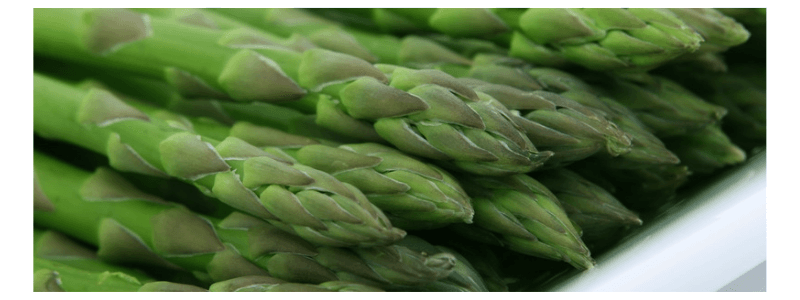No products in the basket.
The Best Wines to Drink with Asparagus
THE BEST WINES TO DRINK WITH ASPARAGUS Asparagus is one of those foods that are notoriously difficult to pair with wines; others include artichokes, vinaigrette, lemons and chilli. So difficult is it to find wines that will complement asparagus and not be overcome by its unique and slightly bitter taste, that some wine writers will advise not to drink wine at all with it. But there are wines that will create a good pairing with this much aligned vegetable – it’s just a matter of looking at the characteristics of asparagus, what it is being cooked with and how the taste might change with different wines in order to find the best wines to drink with asparagus and asparagus-based dishes. WHY ASPARAGUS IS SO DIFFICULT TO MATCH WITH WINE As I am sure you are aware, green asparagus which is more commonly eaten than white asparagus in the UK, has a strong and quite distinctive flavour. This is the first problem when trying to find wines to pair with it as that strong flavour should not overpower the taste of the wine. We should therefore aim for wine with a fairly powerful taste. The strong asparagus flavours are vegetal, some might even describe them as grassy, which is not surprising as they come from chlorophyll which develops as the asparagus pokes out of the soil until it reaches around 20cm in height when it is harvested to meet the increasing appetite for it. These green flavours can make wine taste bitter and acids in the chlorophyll can give the wine a metallic edge; wine with low acidity and with predominantly fruity rather than vegetal flavours could clash. And then there is a slight bitterness on the finish of the asparagus itself which will emphasise any bitterness, tannins and oak flavours in wine. A fairly strong-flavoured wine with high levels of acidity and vegetal flavours, no bitterness, low tannins and subtle or no oak flavours sounds like it will be the best option. This is why Sauvignon Blanc is usually the first suggestion and sometimes the only suggestion to drink with asparagus – and if you like your asparagus steamed or gently boiled with no other accompaniments, then Sauvignon Blanc is ideal. If you are not a Sauvignon fan, then opt for a crisp Austrian Gruner Veltliner as its profile is more vegetal than fruity. Often however asparagus is just part of a dish rather than the main attraction and so let’s consider various asparagus-based dishes and tackle them individually because the other ingredients need to be given consideration when choosing your wine; a top tip is to consider the most dominant component of a dish and use that to match with wine. WINE WITH ASPARAGUS AND BUTTER There is nothing nicer, in my view than the first asparagus of the season steamed or boiled just until ‘al dente’ and served warm with butter melting on top of it. You might be tempted to reach for that Sauvignon Blanc which meets all the criteria above but the richness of the butter adds another dimension and needs a wine that is also fairly rich and less acidic than a Sauvignon Blanc. Consider a Chardonnay with good acidity as the fat in the butter could dilute any crisp acidity in the wine and make sure it is an unoaked Chardonnay as a strong oak influence could clash with the bitterness of the asparagus. WINE WITH ASPARAGUS AND HOLLANDAISE SAUCE Hollandaise is a classic sauce to accompany asparagus; made from egg yolks, butter and lemon juice, it’s rich and so needs a wine with refreshing acidity to cut through that richness. In this instance I find champagne is the best option or a Chardonnay – even a full-bodied Chardonnay that has seen oak but only as long as it has the necessary crisp acidity. WINE WITH ASPARAGUS SOUP Usually made with cream and some sort of stock, asparagus soups can potentially be very rich so again a richer wine makes more sense than a Sauvignon Blanc as long as it’s not so overpowering that you will lose the delicate flavour of the asparagus. I would suggest an Austrian Gruner Veltliner which has a sharp acidity and is generally pretty food-friendly but especially for dishes with a lot of herbs and green vegetables. WINE WITH ASPARAGUS RISOTTO A creamy asparagus risotto or a creamy vegetable risotto where the distinctive flavour of asparagus dominates needs a wine which combines a bit of body and good acidity so a Sauvignon Blanc could work as long as it has body or consider this white Rioja which, unusually is composed of 50% crisp Sauvignon and 50% Tempranillo Blanco for the body. A cool-climate Pinot Grigio or Pinot Bianco would also work well. Top tip – if your plant-based risotto also contains mushrooms, you could choose a light unoaked red wine. As they are a more savoury vegetable, mushrooms can make some wines seem more acidic and less fruity so a savoury red wine with lower acidity like a Pinot Noir or a Nebbiolo would be ideal. WINE WITH CHAR-GRILLED ASPARAGUS Similarly adding the savoury bite of char-grilled or barbecued asparagus would be well-suited to a light red wine. A fruity red with quite intense flavours would be ideal but a wine with high tannins should be avoided as they could emphasise the char-grilled nature of the asparagus. Again a light Pinot Noir would work or a fruity Bardolino. WINE WITH ASPARAGUS WRAPPED IN HAM If serrano or a similar dried cured ham is wrapped around asparagus, another key element comes into play and that is salt. Highly tannic wines would clash with the saltiness and make the ham and the wine taste metallic so it is best to stick to white wine like a crisp white Rioja. WINE WITH ASPARAGUS VINAIGRETTE A double-whammy here with the vinegar in the dressing also a major consideration and probably the most dominant taste of the dish – but you also need a wine to make the asparagus shine through. Sauvignon


